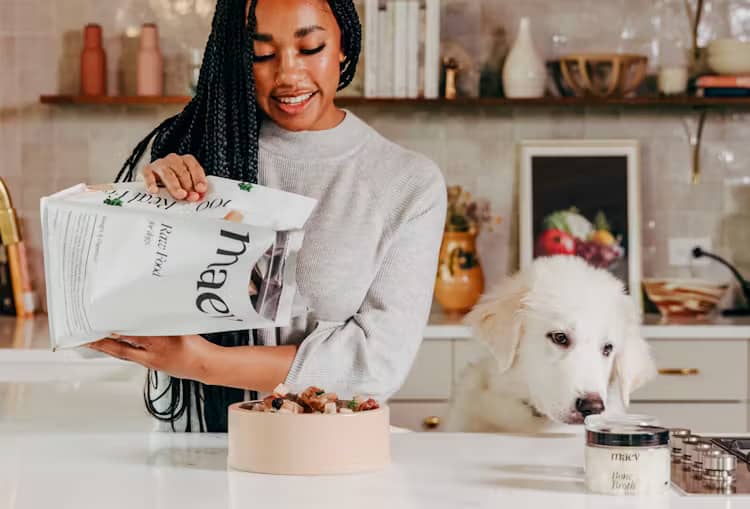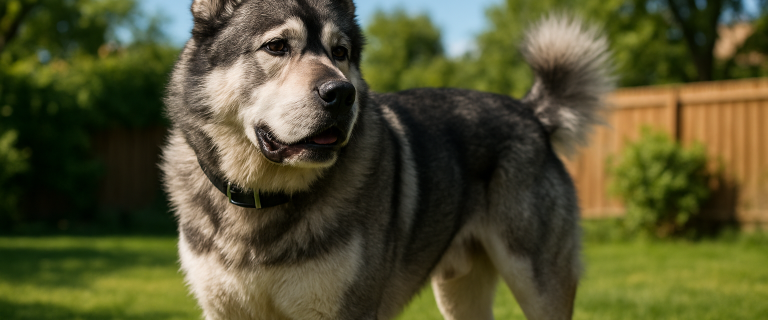If you’ve never heard of the Barbet dog, you’re not alone—and that’s exactly why this guide exists. This curly-coated cutie has been flying under the radar for way too long, especially considering how much this breed has to offer. Originally bred as a French water dog (and yes, they love to swim), the Barbet is friendly, intelligent, and just the right amount of goofy.
Whether you’re looking for a loyal family dog, a hiking buddy with webbed paws, or a low-shedding breed that won’t wreak havoc on your allergies, the Barbet might just be your perfect match. In this guide, we’ll dive into everything you need to know about the Barbet—from personality and care tips to training, grooming, and why this rare breed is finally getting its moment in the spotlight. Let’s get to know this curly little charmer, shall we?Let’s dive into everything you need to know about this iconic breed, from temperament and training to grooming needs and beyond.
Quick Breed Facts
| Trait | Info |
|---|---|
| Group | Sporting |
| Height | 19–24.5 inches |
| Weight | 35–65 lbs |
| Lifespan | 12–14 years |
| Coat Type | Long, curly, and dense |
| Shedding Level | Low |
| Energy Level | Moderate to High |
| Good With Kids? | Yes, especially with early socialization |
| Good With Other Pets? | Yes, generally friendly and sociable |
| Trainability | Highly trainable and eager to please |
Breed Overview
The Barbet (pronounced bar-BAY) is one of those rare gems in the dog world—a breed with centuries of history and a heart as big as its fluffy, curly head. Originating in France, the Barbet dates back to at least the 16th century and was originally bred as a waterfowl retriever. In fact, its name comes from the French word barbe, meaning “beard,” thanks to the breed’s distinctive facial hair.
This versatile working dog was beloved by French royalty and peasants alike, prized not only for its skills in marshy terrain but also for its loyal, good-natured companionship. Despite nearly disappearing after both World Wars, dedicated breeders helped bring the Barbet back from the brink, and today it’s gaining more recognition—especially among families looking for a smart, affectionate, and low-shedding breed.
Temperament & Personality

If I had to sum up the Barbet in a few words, we’d go with: joyful, loyal, and a little goofy (in the best way possible). These dogs are known for their cheerful disposition and are happiest when they’re part of the family action—whether it’s splashing in a lake, hiking a trail, or just lounging on the couch with their humans.
Here’s a closer look at what makes the Barbet such a lovable companion:
- Affectionate & Loyal: Barbets form strong bonds with their people. They’re known for being gentle, devoted, and affectionate without being overly clingy.
- Sociable Nature: They usually get along well with other dogs and pets, and they tend to be great with kids—especially when socialized early.
- Intelligent & Eager to Please: These dogs are whip-smart and love to learn, which makes training a breeze for the most part. That said, some can have a stubborn streak, especially if they get bored.
- Playful Energy: Barbets are active dogs with a moderate to high energy level. They’re not hyper, but they do need regular mental and physical stimulation to stay happy.
- Calm Indoors: One of the Barbet’s best traits is its ability to chill indoors, making them great house companions—as long as they get their daily dose of exercise.
Overall, the Barbet is a happy-go-lucky breed that blends brains, brawn, and a boatload of charm. They’re the kind of dog that wants to be where you are, doing what you’re doing… and ideally, getting a little muddy along the way.
Ideal Home
Before you fall completely in love with that curly face (and let’s be real—you probably already have), it’s important to know whether your lifestyle and home setup are a good match for a Barbet. While they’re incredibly adaptable, there are a few things this breed truly needs to thrive.
- Homes with Room to Roam: You don’t have to live on a farm or next to a lake, but Barbets do appreciate having a yard to run around in. If you’re in an apartment, plan on plenty of walks and active playtime to keep them mentally and physically satisfied.
- Active Families or Individuals: These dogs love outdoor adventures. Hikers, runners, and weekend warriors—Barbets are totally your people (er, pups). They’ll gladly join you for a jog or a splash in the nearest lake.
- Households Where Someone’s Home Often: Barbets are social dogs who genuinely want to be part of the family. They don’t do well left alone for long periods, so remote workers, stay-at-home parents, or multi-person households are a great fit.
- Families with Kids or Other Pets: Thanks to their friendly and easygoing temperament, Barbets often get along great with children and other animals. Early socialization helps, of course, but they’re generally polite and playful from the start.
- People Who Don’t Mind a Bit of Grooming Work: We’ll get into this more in the grooming section, but let’s just say that beautiful coat isn’t exactly low-maintenance. If you’re willing to put in the time—or schedule regular pro grooming appointments—you’ll be golden.
Not Ideal For:
- People looking for a totally low-energy couch potato.
- Households that are frequently empty for long stretches of time.
- Those allergic to dog dander and hoping for a 100% hypoallergenic dog (no breed is truly hypoallergenic, although the Barbet is considered low-shedding and allergy-friendly).
Bottom line? If you’re active, present, and don’t mind a little grooming TLC, the Barbet can fit beautifully into a variety of homes—from the suburbs to the countryside and even city life (with effort).
Hot Tip:
Exercise & Stimulation Needs
The Barbet may not be the most hyper dog on the block, but don’t mistake their chill indoor vibes for laziness. These dogs were bred to retrieve waterfowl in the marshes of France, which means they’ve got stamina, brains, and a serious love for movement. In short: they need a good daily outlet for all that energy—or they’ll find their own (and you might not love what that looks like).
How Much Exercise Does a Barbet Need?
On average, Barbets need at least 45 to 60 minutes of exercise per day. That can include:
- Long walks or hikes
- Swimming (their absolute favorite!)
- Backyard play sessions
- Interactive games like fetch or frisbee
- Dog sports like agility, dock diving, or even nose work
They’re not marathon runners, but they do love a good adventure—especially if it involves water, mud, or a chance to chase something (safely, of course).
Don’t Forget Mental Stimulation
The Barbet is a highly intelligent breed, and a bored Barbet is a recipe for destruction. These pups need mental challenges just as much as they need physical ones.
To keep your Barbet mentally sharp:
- Rotate puzzle toys and treat-dispensing gadgets
- Practice new tricks regularly
- Try hide-and-seek or scent games around the house
- Use obedience training sessions as enrichment (they actually enjoy the structure!)
- Set up mini obstacle courses in your backyard
Think of it this way: if you keep their brain busy, their paws are less likely to get into mischief.
Diet & Feeding Tips
What to Feed a Barbet
Whether you go with dry kibble, fresh food, raw, or a combination, the key is quality ingredients and a formula that matches your Barbet’s age, size, and activity level. Look for:
- Protein as the first ingredient (like chicken, beef, salmon, or turkey)
- Healthy fats (like fish oil or flaxseed, which support that gorgeous curly coat)
- No unnecessary fillers (say no to mystery meat by-products and artificial preservatives)
Some Barbet parents swear by fresh or gently cooked food delivery services, which can be especially helpful if your pup has allergies or a sensitive stomach.
Feeding Schedule
- Puppies (under 12 months): 3 meals per day
- Adults: 2 meals per day
- Seniors: Often still 2 meals, but in slightly smaller portions depending on activity level
Free-feeding isn’t recommended for Barbets—they’re not usually chowhounds, but scheduled meals help with digestion and weight control.
Watch Their Weight
Barbets are active, but they’re also smart—and smart dogs learn where the treat jar is very quickly. Overfeeding (especially with too many extras) can lead to joint strain and other health issues over time.
Use a measuring cup, stick to daily portion guidelines, and remember:
✅ Treats should make up no more than 10% of their daily caloric intake.
Our Top Picks:
|
Fresh, human-grade food made from real ingredients for a healthier pup today and tomorrow. Recipes made from whole food ingredients, slow cooked for nutrition and flavor and always fresh. LIMITED TIME OFFER 60% OFF YOUR FIRST BOX |
Sundays for Dogs is an air-dried, human-grade dog food made with real beef and superfoods. It’s grain-free, chicken-free, and perfect for picky eaters or dogs with sensitive stomachs. LIMITED TIME OFFER 50% OFF YOUR FIRST BOX WITH COUPON CODE BINGO50 |
Maev's vet-formulated protein-rich Raw Food is made with just 11 core ingredients including lean Beef or Chicken, fresh vegetables and fruits, and functional supplements in every serving. GUARANTEED BEST PRICE SAVE 30% OFF YOUR FIRST PURCHASE WITH CODE CHOW30 |
Fresh, human-grade food made from real ingredients for a healthier pup today and tomorrow. Recipes made from whole food ingredients, slow cooked for nutrition and flavor and always fresh.
LIMITED TIME OFFER
60% OFF YOUR FIRST BOX
Sundays for Dogs is an air-dried, human-grade dog food made with real beef and superfoods. It’s grain-free, chicken-free, and perfect for picky eaters or dogs with sensitive stomachs.
LIMITED TIME OFFER
50% OFF YOUR FIRST BOX
WITH COUPON CODE BINGO50
Maev's vet-formulated protein-rich Raw Food is made with just 11 core ingredients including lean Beef or Chicken, fresh vegetables and fruits, and functional supplements in every serving.
GUARANTEED BEST PRICE
SAVE 30% OFF YOUR FIRST PURCHASE WITH CODE CHOW30
Hot Tip:
Grooming & Shedding
Let’s talk curls. The Barbet’s iconic coat isn’t just for show—it’s thick, wooly, and water-resistant, originally designed to protect them from cold, wet conditions while retrieving game. But those glorious curls don’t maintain themselves. If you’re bringing a Barbet into your home, you’re also signing up for a regular grooming routine. Worth it? Totally. But it’s not a “brush once and forget it” kind of situation.
Coat Care Basics
Barbets don’t shed much, which is great for your furniture (and allergy-prone humans). But their coat does mat easily if neglected, especially in areas like the armpits, behind the ears, and around the collar.
Here’s what a solid grooming routine looks like:
- Brush 2–3 times per week (or more if they’re swimming or romping outside often)
- Use a slicker brush and metal comb to get through the curls without pulling
- Check for mats regularly, especially after outdoor adventures
- Bath every 4–6 weeks or as needed, followed by a thorough dry
- Professional grooming every 6–8 weeks to maintain their shape (unless you’re confident with clippers)
You can choose to keep your Barbet in a long, natural coat or a shorter puppy cut. Either way, keeping up with grooming is non-negotiable unless you want your curly cutie turning into one giant dreadlock.
Shedding Level
Good news for your vacuum: Barbets are considered a low-shedding breed. Their hair is more similar to human hair than typical dog fur, which means it falls out far less frequently and often stays trapped in the curls instead of coating your floor. That said, low-shedding doesn’t mean low-maintenance. Regular brushing is essential to prevent those loose hairs from turning into mats.
Our Favorite Grooming Tools:
Health & Common Issues
The Barbet is generally a healthy and hardy breed, especially when responsibly bred. Their robust working-dog background means they weren’t overbred purely for appearance, which helps reduce the risk of many genetic issues. That said, no breed is completely immune to health concerns—and being aware of potential issues upfront is key to keeping your pup happy and thriving for years to come.
Common Barbet Health Concerns
Here are a few conditions to keep on your radar:
- Hip Dysplasia: Like many medium-to-large breeds, Barbets can be prone to hip dysplasia. Choosing a breeder who screens for this is essential.
- Elbow Dysplasia: Less common than hip issues, but still worth noting, especially in active dogs.
- Progressive Retinal Atrophy (PRA): This inherited eye condition can lead to vision loss. Reputable breeders should test for this.
- Ear Infections: Those floppy, hairy ears trap moisture—especially if your Barbet is a swimmer. Regular ear cleaning is a must.
- Allergies or Food Sensitivities: Some Barbets may develop skin or digestive sensitivities, especially if fed lower-quality food or exposed to environmental allergens.
Staying Ahead of Health Issues
You can’t prevent everything, but you can set your Barbet up for the healthiest life possible with these habits:
- Choose a responsible breeder who does OFA and genetic health testing
- Stick to a balanced diet with high-quality ingredients
- Schedule regular vet checkups and stay on top of vaccines and parasite prevention
- Keep ears clean and dry, especially after swimming
- Watch their weight—extra pounds put unnecessary strain on joints
Barbets typically live 12 to 14 years, and many enjoy long, active lives with very few issues. A little preventative care goes a long way with this breed.
Training & Socialization
Barbets are smart. Really smart. But with great intelligence comes…a touch of mischief if that brain isn’t kept busy. The good news? Their eagerness to please and naturally affectionate nature makes them a joy to train—especially if you start early, stay consistent, and keep it fun.
Training a Barbet: What to Expect
Barbets are known for being:
Quick learners who pick up commands with ease
Responsive to positive reinforcement (think treats, praise, and games)
Sensitive to harsh corrections, which can shut them down
Occasionally stubborn, especially during adolescence
Start with basic obedience training from the puppy stage and build up from there. They tend to do especially well in structured environments like puppy classes, where they can learn new skills and socialize at the same time.
Must-Know Training Tips
Keep sessions short, upbeat, and engaging—think 5–10 minutes of focused work, repeated a couple of times a day.
Use high-value treats (and switch them up to keep things exciting).
Incorporate training into daily life—like practicing “wait” before meals or “stay” at the door.
Be patient and consistent. Barbets are intuitive, but they’re not mind readers.
Socialization: Start Early and Often
Because Barbets are naturally friendly and outgoing, early socialization helps them become confident, well-adjusted adults. Introduce your puppy to:
A variety of people (including children, seniors, and people in uniforms)
Different environments (parks, sidewalks, vet offices, pet-friendly stores)
Other dogs and animals
New sights, sounds, and surfaces
Aim for positive exposures—if your puppy seems nervous, don’t push. Go slow and make new experiences feel safe and rewarding.
Hot Tip:
Barbets love a job to do, so training isn’t just about “sit” and “stay.” Teach them fun tricks, scent games, or even beginner agility. It channels their energy in a constructive way—and it’s a blast for both of you!
Are Barbets Good for Families?
In a word? Yes. Barbets make excellent family dogs for the right households. They’re gentle, playful, and incredibly devoted to their people—traits that make them a natural fit for homes with children. These dogs tend to form strong bonds with every member of the family and genuinely enjoy being part of the daily action, whether that’s weekend hikes, backyard games, or just lounging around during movie night.
Their patient and affectionate nature makes them especially well-suited for families with respectful, dog-savvy kids. They’re not overly rambunctious, but they do have enough energy to keep up with an active household. Just keep in mind that young children should always be supervised around any dog, no matter how friendly, and early socialization and training are key to helping your Barbet feel confident in a busy environment.
Another bonus? Barbets typically get along well with other pets, including dogs and even cats, especially when introduced properly. All in all, they’re the kind of dog that wants to be included—whether you’re heading out on an adventure or hanging out at home. If your family is looking for a loyal, smart, and social dog with a heart of gold (and a coat of curls), the Barbet might just be your perfect match.
How Much Does a Barbet Cost?
Barbets are relatively rare, which can impact their initial cost, but ongoing care is similar to other medium-to-large breeds. Here’s a general idea of what you can expect to spend:
| Cost Type | Estimated Amount |
|---|---|
| Purchase/Adoption | $500–$3,500 |
| Food (monthly) | $20–$40 |
| Vet Bills | $300–$800 per year |
| Grooming | $50–$80 per visit or DIY |
Similar Breeds to Consider
If you’re not 100% sold on the Barbet, check out these similar breeds:
- Portuguese Water Dog – Another curly-coated water retriever, this breed shares the Barbet’s love of swimming, smarts, and active lifestyle.
- Standard Poodle – Elegant and energetic, Poodles are highly trainable, low-shedding, and just as eager to please as Barbets.
- Lagotto Romagnolo – Known as the “truffle dog,” this rare Italian breed is affectionate, intelligent, and has a similar coat and energy level to the Barbet.
Fun Facts About Barbets
They have webbed feet!
Barbets were bred for water retrieving, so they come equipped with natural swim gear—webbed toes that make them powerful swimmers.They’re basically the original “doodle.”
With their curly, low-shedding coats and affectionate nature, Barbets have a lot in common with modern-day doodle mixes—except they’ve been around for centuries.French royalty were big fans.
Historical records show that King Henry IV of France owned a Barbet—and he even allowed the dog to roam the royal palace halls.Their name means “beard” in French.
The word “Barbet” comes from barbe, meaning beard—thanks to the adorable facial fuzz that gives them their signature scruffy look.They nearly went extinct—twice.
Both World Wars hit the breed hard, but passionate breeders worked to preserve the Barbet and helped bring them back from the brink.
Is a Barbet Right for You?
You want a friendly, loyal dog that thrives on companionship and being part of the family.
You lead an active lifestyle and enjoy outdoor activities like walking, hiking, or swimming.
You’re prepared to keep up with regular grooming or can budget for professional grooming visits.
You’re looking for a low-energy or hands-off dog that doesn’t require much exercise or attention.
You’re rarely home or unable to provide regular social interaction and mental stimulation.
You want a completely low-maintenance coat that requires minimal brushing or upkeep.
FAQs
Final Thoughts
If you’re looking for a dog that’s equal parts athletic, affectionate, and absolutely adorable, the Barbet might just check all your boxes. With their loyal nature, easygoing temperament, and signature curly coat, these rare French water dogs make fantastic companions for active families, outdoorsy individuals, and anyone who wants a dog that’s eager to be part of the adventure.
Yes, they need a bit more grooming than your average pup. And sure, they’re not the easiest breed to find. But for the right person, the Barbet brings a unique blend of smarts, sensitivity, and playful energy that’s hard not to fall in love with.
Whether you’re already on a breeder’s waitlist or just starting to research, one thing’s clear: the Barbet may be rare—but for the right home, they’re anything but ordinary.
Author
-

Hi there! I'm Nicole, the editor-in-chief and one of the writers here at DogVills. I've been a dog owner for most of my adult life and a dog lover for much longer than that. I grew up with a wonderful German Shepherd named Jake, who I loved SO much that I named my son after him. When I'm not writing for DogVills or my own site, Pretty Opinionated, I love spending time with my teenager (when he actually lets me) and my Pharaoh Hound, Freya. I'm also an avid reader AND a total TV fanatic.
View all posts









